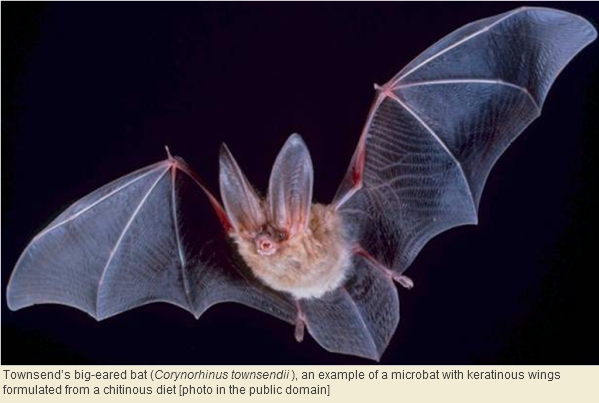The apparent failure of bats to fill empty niches in New Zealand is owing to the ecological unsuitability of these islands for mammals.
 Prof. Mumblebard claims: “Bats didn’t evolve to fill flying or flightless niches in New Zealand because birds pre-empted them.”
Prof. Mumblebard claims: “Bats didn’t evolve to fill flying or flightless niches in New Zealand because birds pre-empted them.”
 Robin and the Honey Badger respond: “New Zealand was home to only three species of microbats which were also the only mammals on the islands in the last three million years. This outcome falls well short of what mammals could reasonably have been expected to achieve over such a long period. Why was there no evolutionary radiation of megabats and various microbats, as well as novel non-flying mammals arising from bats? Megabats are known to have flown across the Tasman Sea from Australia only to find these islands unsuitable for unknown reasons. And fossils show that scurrying bats, once thought to have evolved within New Zealand in response to the lack of rodents, were shared with ancient Australia. So it’s evident that bats had as much opportunity to evolve into new niches in New Zealand as birds did, but failed. This is because ecological conditions in New Zealand are less suited to the body plan of mammals, whether flying or flightless, than to that of birds. Indeed, birds and mammals have competed on an equal footing as indigenous and transoceanic colonists of New Zealand but bird physiology has proved superior in competition for the scarcest resources, particularly certain micronutrients.”
Robin and the Honey Badger respond: “New Zealand was home to only three species of microbats which were also the only mammals on the islands in the last three million years. This outcome falls well short of what mammals could reasonably have been expected to achieve over such a long period. Why was there no evolutionary radiation of megabats and various microbats, as well as novel non-flying mammals arising from bats? Megabats are known to have flown across the Tasman Sea from Australia only to find these islands unsuitable for unknown reasons. And fossils show that scurrying bats, once thought to have evolved within New Zealand in response to the lack of rodents, were shared with ancient Australia. So it’s evident that bats had as much opportunity to evolve into new niches in New Zealand as birds did, but failed. This is because ecological conditions in New Zealand are less suited to the body plan of mammals, whether flying or flightless, than to that of birds. Indeed, birds and mammals have competed on an equal footing as indigenous and transoceanic colonists of New Zealand but bird physiology has proved superior in competition for the scarcest resources, particularly certain micronutrients.”
Please join us here at the Bio-edge with your own comments. In the discussion below we encourage links to any evidence supporting either Prof. Mumblebard or Robin and the Honey Badger.

